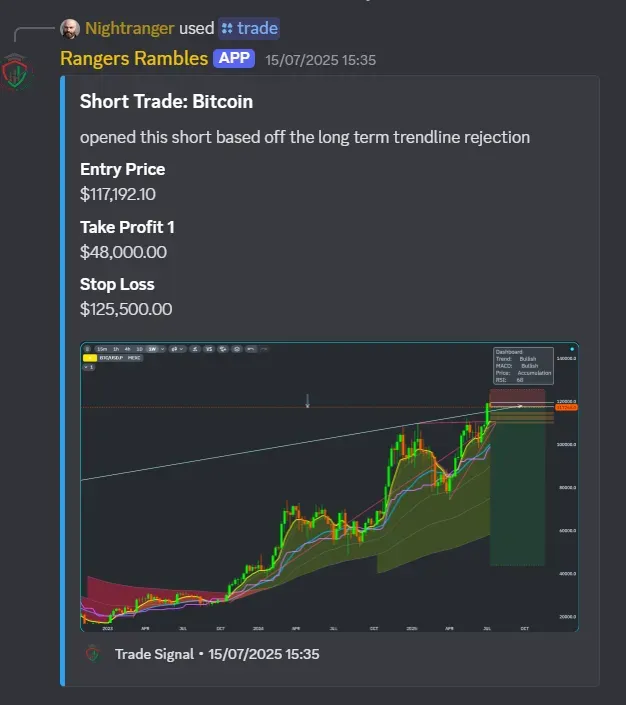The Psychology of Trading
Trusting your analysis amid external Influences

On the 15th, I published an analysis suggesting the bull run had concluded, within the cvarious groups I regularly post too, this was supported by my reasoning and visual evidence. I even initiated a short position, which, as of now, would have yielded a 3.95R return.
Shortly after, my post was challenged by someone whose perspective differed from mine. Their questioning prompted me to re-examine my analysis, leading me to review additional charts, including historical data going back from the 2018 bull run. This process caused me to second-guess my original thesis and ultimately shift my trading bias. As a result, I made several bullish trades that have since led to notable losses with-in my portfolio.
It’s important to clarify that the individual who challenged my post was not at fault; healthy skepticism and critical discussion are essential in trading. However, this experience underscores a crucial psychological aspect of trading: the power of persuasion and the impact of external opinions on our own decision-making. Despite years of experience and countless hours spent analyzing a single chart, I found myself influenced by someone else’s viewpoint, demonstrating that no trader is immune to these psychological battles.
Whether or not the bull run is truly over remains to be seen. As always, we must remain adaptable, updating our strategies as new data emerges. The market is dynamic, and our analysis must evolve accordingly to this new data.
I share this experience not to assign blame, but to highlight the importance of maintaining confidence in your own analysis and being mindful of how external influences can affect your trading decisions. This is a challenge every trader faces, regardless of experience. For those new to the space, remember: setbacks are part of the journey. The key is to learn, adapt, and keep moving forward.



Be the first to comment
Publish your first comment to unleash the wisdom of crowd.
